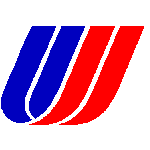A Brief History of United Airlines ESOP

A Brief History of United Airlines ESOP |
 |
| UAL Corporation
Article written some time in late 1994. Source, unknown OVERVIEW
The buyout came after 3 years of losses totaling more than $800 million. United has been plagued by high costs associated with such diverse events as the Persian Gulf War of 1990- 91 (which caused air travel to decline), fare wars with competitors, and the growth of a new generation of small, short-haul airlines. These new little airlines not only increase competition on routes, but they also are able to undercut the major airlines on prices because they typically have nonunionized employees who are willing to perform several jobs (on some, pilots may be called upon to move luggage, for example) . United, with long-standing union contracts guaranteeing high pay for narrow job descriptions, has found it difficult to compete. Thus the repeated requests for wage concessions. But the unions refused to make concessions without gaining control. However, not all employees support the buyout, which was negotiated by the pilots' and machinists' unions. Although the plan makes provisions for their ownership interest, the flight attendants and nonunionized employees had no input in the plan. WHEN
Under Patterson (1934-63), United was slow to use new technology, offering jet service later than American, its leading rival (1959). Still, in 1961 United became the US's #1 airline after buying Capital lines, which added Washington, DC, and points along the Great Lakes and in Florida to its network. The company bought the Westin Hotel Company in 1970 and named Westin president Eddie Carlson as United's CEO in 1971. Another hotelier, Richard Ferris, became CEO in 1979. Hoping to build United into a travel conglomerate, Ferris spent $2.3 billion buying Hertz Corporation (1985), Pan Am's Australian and Asian routes (1986), and Transworld's Hilton International (1987). In 1987, after spending an additional $7.3 million to change United's name to Allegis Corporation, Ferris resigned when Coniston Partners, the company's largest shareholder, threatened to oust the board and liquidate the company. Assuming its old name under Stephen Wolf (former Flying Tigers chief), United sold its hotels and car rental business as well as 50% of its computer reservation partnership (Covia). A 1989 takeover bid by Los Angeles billionaire Marvin Davis led to a management and union buyout plan, which failed in 1989. Another union buyout attempt failed the next year. United then reached an accord with Coniston, which sold most of its stake in UAL in exchange for 2 seats on the board. In 1990 United received DOT permission to fly from Chicago to Tokyo. In 1991 and 1992 United bought Pan Am's London and Paris routes, most of Pan Am's Latin American routes, and its Los Angeles-Mexico City route. UAL bought Air Wis (owner of Air Wisconsin, one of its feeders) in 1992. Throughout 1993 United sought to negotiate a buyout with its unions. Early in the year it canceled plans to hire 1,900 new employee's, instead laying off 2,800 and cutting US management salaries and directors' fees. Finally, the sale of United's kitchen operations to Dial's Dobbs Houses (eliminating 5800 union jobs) and the announcement of plans to start up a subsidiary short-haul airline brought the pilots and machinists (but not the flight attendants) back to the table. Many believe that employee ownership ,will make the company's workers more involved in their jobs, while others fear that it will present a conflict of interest between job preservation and economically expedient management of the business. |
//Begin Meta Data// Selector Code: .c...